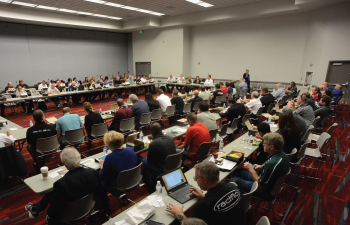SEMA News - June 2010
Reaching Tier Two and Three
By Alysha Webb
 |
|
|
China’s urban market is often broken down into tiers based on population and gross domestic product. The tier-two cities have a combined population of 94 million people and per capita income of RMB 15,000 ($2,196 USD). |
|
“In recent years, the market for performance and customization products in China’s second- and third-tier cities has gradually been heating up,” said Yang Miao of FBLife, an off-road event promotion organization. “There is a lot of space for developing the market there.”
FBLife, established in 2002, promotes its events online. Many of FBLife’s more than 200,000 members who actively participate in off-road events are located in second- and third-tier cities, said Yang.
“They are also important automotive product consumers and enthusiasts,” he said.
The key, said Alex Borla, CEO of Borla Performance of Johnson City, Tennessee, is to let those enthusiasts in the smaller cities know about your product and how they can get it. Borla travels to China frequently.
“Geography has nothing to do with what drives this market,” said Borla, “This is a very small sub-market. It is almost a cult.
He recommended using the Internet to reach auto enthusiasts in the smaller cities—and having a Chinese-language page. A study by McKinsey & Co. backs him up. It found that people who have Internet accounts in China’s smaller cities spend 50% of their leisure time online.
Tier Two and Tier Three What?
China’s urban market is often broken down into tiers based on population and gross domestic product. Tier one consists of Shanghai, Beijing, Shenzhen and Guangzhou. They have a combined population of 30 million people. Of the two largest, Shanghai’s per capita GDP was $10,530 in 2009; Beijing’s per capita GDP was $9,229. But in an example of the wide regional differences in China, Guangzhou’s per capital GDP in 2009 was only $3,070. Cost of living varies widely in China’s cities, and direct comparisons of GDP per capita does not reflect the purchasing power of consumers in different locations.
There are 32 tier-two cities. They are either provincial capitals or major urban areas. The tier-two cities have a combined population of 94 million people and per capita income of RMB 15,000 ($2,196 USD).
China has 242 tier-three cities. They have an average per capita income of RMB 12,500 ($1,830 USD).
Don’t be fooled by the low income levels in China’s smaller cities. There are pockets of rich people in all of them who can afford expensive specialty performance products.
Indeed, Mercedes-Benz is now looking to open dealerships in tier-three cities, said an auto industry executive.
Per capita vehicle ownership in these cities is lower than in the tier-one cities, and vehicle sales are projected to grow most quickly in the tier-two and tier-three cities in the coming years. A caveat is that it will take longer for the used-car market to develop in China’s tier-two and -three cities, and a growing used-car market can provide a boost to the specialty-equipment market.
The niche-market nature of demand for automotive specialty products has created somewhat of a patchwork market in China’s tier-two and -three cities, cautioned Eric Tai, a project manager in the automotive sector with TNS Research International in Shanghai. Each shop in a tier-two city might serve only a specific geographic area or specific models and performance parts, he said.
“So you can imagine that the development of this market could be quite different from one shop to another within the city—let alone discussing the difference between different cities,” said Tai.
Still, in a country where light-vehicle sales grew by 48% in 2009 to 12.96 million units, according to J.D. Power and Associates, and where close to 10% growth is forecasted for the next decade, even a niche can be significant.
“First, assess the consumption habits of people in the second- and third-tier cities, the transportation situation and the standard of living,” said Yang. “Then start investigating the suitable markets for your products.”
SEMA Helps Members Secure Place in Booming Chinese Auto Market
SEMA has created a unique program to assist members in exploring their products’ sales potential in China at the upcoming SEMA China International Auto Parts Expo (CIAPE) China Business Development Conference, September 23–26, in Beijing. American manufacturers will be paired with relevant Chinese buyers in up to a dozen private, pre-scheduled meetings, making the conference a low-cost way for SEMA members to explore the market and connect with leading players. The program also includes exclusive networking events and a VIP tour of the CIAPE. For additional information on the event, contact lindas@sema.org. or visit www.sema.org/china








